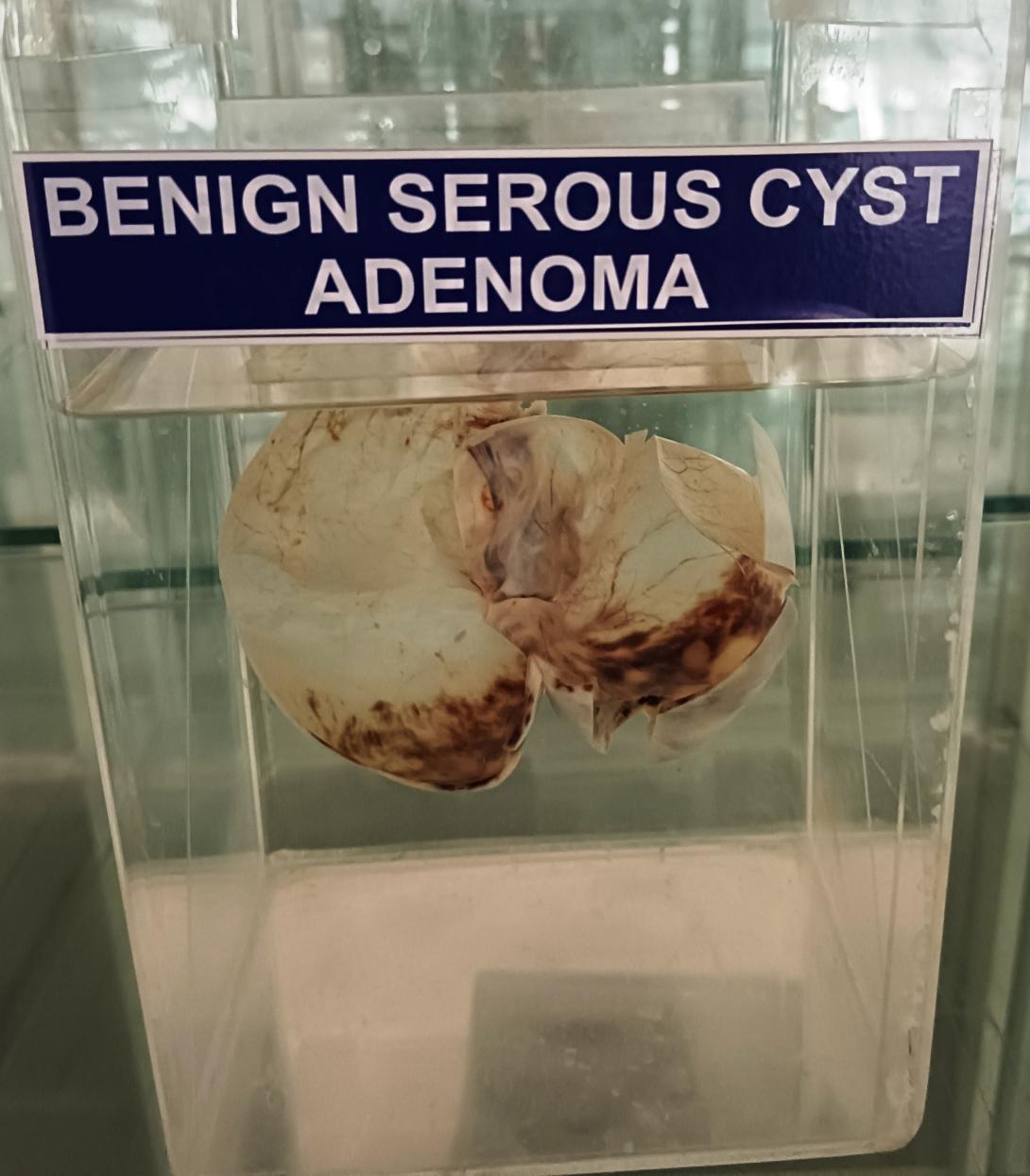A benign serous cystadenoma is a type of ovarian tumor that arises from the cells lining the surface of the ovary. It is typically a large cystic tumor that is filled with clear, watery fluid.
Pathologically, serous cystadenomas are characterized by a single layer of cells lining the cyst wall, with no evidence of atypia or invasion. The cells are typically columnar in shape, and have a uniform appearance. The cyst is usually filled with clear or pale yellow fluid, which is often described as serous.
Microscopically, serous cystadenomas are composed of cystic spaces lined by a single layer of cells that are usually tall and columnar with apical nuclei. The cells may have cilia, which help to move fluid through the cyst. The cysts may also contain papillary projections, which are finger-like growths that extend into the cyst lumen.
On gross examination, serous cystadenomas are usually large, measuring several centimeters in diameter. They are typically well-circumscribed, with a smooth, glistening surface. The cysts may be unilocular or multilocular and may contain papillary projections.
Serous cystadenomas are typically benign and do not have the potential to become malignant. They are usually asymptomatic and require no treatment unless they are large enough to cause discomfort or if there are concerns about the possibility of malignancy.

